Healthy Fats for Vegetarians
Fats provide a concentrated source of energy that is essential for the body. Generally, fats are associated with obesity, which is a misconception. There are healthy fats and unhealthy fats. The healthy fats are one of the essential parts of a balanced diet. Healthy fats are beneficial for providing energy, absorbing nutrients, and proper functioning of the brain. There are healthy fats for vegetarians as well as for non-vegetarians. Consuming healthy fats in meals proves beneficial, which vegetarians can obtain from plant-based or dairy-based goods. This article covers healthy fats for vegetarians, including their benefits and potential drawbacks.
Types of Fats
| Types of Fats | Explanation | Example Sources |
| Saturated Fats | Fats are normally solid at room temperature. The excessive use increases LDL (bad) cholesterol, which raises the risk of heart disease. | Vegetarian: Butter, cheese, and full-fat dairy goods Oils (coconut oil, palm oil) Non-Vegetarian: Red meat (buffalo, pork, goat), Chicken, eggs |
| Trans Fats | Artificial fats are produced through hydrogenation. The risk of heart disease significantly increases as the bad cholesterol (LDL) rises and good cholesterol (HDL) lowers. | Processed snacks, fried foods, baked goods (cookies, cakes), margarine, fast food, packaged foods |
| Unsaturated Fats | Healthy fats that are in a liquid state at room temperature. Moderate consumption helps reduce bad cholesterol levels and lower heart disease risk. Two types: monounsaturated and polyunsaturated fats. Polyunsaturated fats include both Omega-3 and Omega-6 fatty acids. | Monounsaturated Fats: Avocado, Oils (Olive, Peanut oil), Nuts (almonds, cashews), Seeds (pumpkin, sesame) Polyunsaturated Fats: Vegetarian: Flaxseeds, chia seeds, walnuts, soybean, sunflower oil Non-Vegetarian: Fatty fish (salmon, mackerel, sardines) |
Suggested: Is Vegan Food Always Healthy?
Healthy Fats for Vegetarians
Plant-based and dairy products are sources of healthy fats for vegetarians. They are very rich in unsaturated fatty acids, antioxidants, nutrients, and vitamins that are best for overall well-being. Avocados, nuts, seeds, and plant oils are some ample sources of healthy fats.
Healthy Fat Sources for Vegetarians
| Food Sources | What We Get |
| Avocados | Rich in vitamins A, D, E, and K, High in monounsaturated fats and fiber |
| Nuts and Seeds (e.g., almonds, walnuts, chia seeds, flaxseeds) | Good sources of Omega-3 fatty acids, protein, and fiber |
| Olive Oil | Great source of monounsaturated fats and anti-inflammatory |
| Coconut Oil | Contains medium-chain triglycerides (MCTs) providing quick energy |
| Nut Butters (e.g., almonds, peanuts, etc.) | Good source of healthy fats, protein, and fiber |
| Quinoa | Rich in high-calorie and high-protein |
| Tofu | Excellent source of monounsaturated and polyunsaturated fats |
World Health Organization Fat Consumption Recommendations
The World Health Organization (WHO) recommends consuming a balanced and moderate healthy fats to maintain overall health.
| Types of Fats | Intake Recommendations |
| Total Fats | 10% to 35% of total daily calorie |
| Saturated Fats | Less than 10% of total daily calories |
| Trans-Fats | Less than 1% of total daily calories (as low as possible) |
| Unsaturated Fats | Majority of fat intake should come from unsaturated fats |
Benefits of Consuming Healthy Fats
- Supports Brain Health: Omega-3 fatty acids are vital for cognitive function, which helps improve memory and focus.
- Boosts Heart Health: Unsaturated fats, especially omega-3s, help reduce the risk of heart disease by lowering bad cholesterol levels.
- Enhances Nutrient Absorption: Healthy fats absorb fat-soluble vitamins (A, D, E, K), which are essential for various bodily functions.
- Provides Long-Lasting Energy: Healthy fats provide a firm and constant energy source, keeping you active for longer hours.
- Supports Hormone Production: Healthy fats support in production of vital hormones like estrogen, testosterone, and cortisol essential for body functioning.
- Weight Management: The moderate consumption of healthy fat helps in controlling obesity.
- Promotes Healthy Skin: Healthy fats minimize the risk of dry skin and other skin conditions and maintain skin elasticity and hydration.
- Rich in Antioxidants: Many plant-based fats are rich in antioxidants and added vitamins and minerals that support overall health.
- Reduces Inflammation: Some plant oils have anti-inflammatory properties that are beneficial to minimize the risk of chronic diseases like arthritis.
- Improves Mood: Healthy fats support the production of neurotransmitters like serotonin, which regulate mood and stress levels, enhancing better mental health.
Contraindications of Consuming Healthy Fats
- Consuming high-calorie foods in high quantity is not good for health.
- Coconut oil consumption can cause digestive issues for some people.
- Consuming heavily processed forms of healthy fats like olive oil or nuts can lose their benefits, reducing their nutritional value.
- Some people may have allergies or sensitivities to specific sources, such as nuts or seeds.
- Plant-based fats contain ALA but limited Omega-3s (DHA and EPA) that can be addressed with algae-based supplements.
- Limit fat intake for individuals with specific conditions, such as pancreatitis or gallbladder disease.
Conclusion
It is best to consume quality healthy fats for vegetarians for better results in the body. The best quality and right quantity of healthy fats is a medicine for overall well-being. Consuming healthy fats has several benefits, so select the right ones. Avocados, nuts and seeds, and olive oil are good sources of healthy fats for vegetarians.
Written By: Anjali B
Understanding Sound Healing and Sound Baths
Sound is a powerful and effective medium that has been long in practice offering numerous benefits for the mind and body well-being. There are various sound therapy methods with different objectives. Among many, sound healing and sound baths are widely practiced methods. Here, we present an insightful article on Understanding sound healing and sound baths using sound frequencies and various instruments for improving overall wellness. Both offer beneficial results if done properly whether in personalized one-on-one or group sessions.
What is Sound Healing?
Sound healing is an ancient therapeutic practice that uses sound frequencies to cure physical, emotional, or energetic imbalances. The vibrations from various instruments such as gongs, singing bowls, tuning forks, and drums are used for sound healing. The main purpose of sound healing is to restore balance within the body and mind.
Science Behind Sound Healing
Scientific studies show that sound therapy can influence brainwaves, heart rate, and cellular activity. It helps to persuade relaxed states, stimulate the parasympathetic nervous system, and reduce stress, promoting overall relaxation and healing.
Sound healing is based on the idea that everything, including our bodies, vibrates at different frequencies, and when these vibrations are disrupted, it can lead to imbalances. By using sound waves from instruments like Tibetan singing bowls and gongs, sound healing realigns these frequencies to promote physical and emotional well-being.
Benefits of Sound Healing
Stress Reduction
The calming sounds help reduce cortisol levels, which in turn lowers stress and anxiety.
Improved Sleep
Sound frequencies can encourage deep relaxation, improving the quality of sleep.
Pain Relief
By reducing muscle tension and promoting relaxation, sound therapy can alleviate chronic pain and headaches.
Emotional Balance
The soothing sounds promote emotional healing by helping to release trapped emotions, enhancing overall well-being.
Enhanced Meditation
Sound frequencies facilitate meditation, helping individuals to enter a deeper state of mindfulness and focus.
What are Sound Baths?
Sound baths are gaining popularity as a form of relaxation and healing. A sound bath is a form of sound healing where participants lie down in a comfortable position while the therapist plays a variety of instruments, such as crystal singing bowls, gongs, or chimes, designed to create soothing, immersive sound waves. Sound baths are ideal for those seeking deep relaxation and a meditative state, offering a calming experience that encourages inner peace.
Science Behind Sound Baths
Scientific Research has shown that sound waves can influence brainwave activity, helping to shift brain states from alert (beta) to relaxed (alpha) and deep meditative (theta) states. These shifts promote healing by reducing stress, improving focus, and allowing for deep relaxation. The low-frequency sounds used in sound baths also stimulate the parasympathetic nervous system, which is responsible for “rest and digest” functions.
The key scientific mechanism behind sound baths is resonance—the idea that certain sound frequencies can stimulate or synchronize with the natural vibrational frequencies of the body’s cells, tissues, and organs. Instruments like crystal singing bowls, gongs, and chimes emit vibrations that penetrate the body, stimulating relaxation and reducing stress.
Benefits of Sound Baths
Deep Relaxation and Stress Reduction
Sound baths promote relaxation by activating the parasympathetic nervous system, reducing stress hormones like cortisol.
Improved Sleep Quality
Regular sound baths can enhance sleep by lowering anxiety and promoting relaxation.
Enhanced Emotional Healing
Sound frequencies facilitate emotional release and help balance emotional states. Many people feel lighter and more emotionally centered after a sound bath.
Increased Focus and Clarity
Sound baths quiet mental chatter, bringing the mind into a present state. This enhances concentration, focus, and creativity, improving mental clarity and performance.
Pain Relief
The vibrations from sound baths reduce muscle tension and activate relaxation pathways, helping alleviate physical pain.
Boosted Immune Function
By reducing stress and promoting relaxation, sound baths indirectly support immune function.
Promotes a Meditative State
Sound baths create an ideal environment for meditation, fostering mindfulness and deep inner peace.

Sound Healing vs. Sound Baths
| Aspect | Sound Healing | Sound Bath |
| Purpose | Therapeutic mediations for physical, emotional, or energetic healing. | A practice for deep relaxation and a meditative experience. |
| Approach | Aimed on specific issues or imbalances. | Aimed at persuading calm and relaxation. |
| Customization | Personalized, often one-on-one sessions. | Usually, a group session and sometimes individualized sessions. |
| Duration | Typically, it lasts from 30 minutes to 1 hour. | Typically, it lasts from 45 minutes to 1 hour. |
| Instruments Used | Uses a variety of instruments, such as tuning forks, singing bowls, gongs, and chimes, for targeted frequencies. | Primarily uses singing bowls, gongs, chimes, and other instruments that create a soothing soundscape. |
| Focus | Healing specific ailments or imbalances in the body, mind, or spirit. | Focused on relaxation, stress reduction, and mental clarity. |
| Experience | Often involves specific frequencies and vibrations applied to particular areas of the body. | Involves immersion in sound waves, with a focus on ambient, flowing tones. |
| Ideal For | Therapeutic or healing benefits. | Relaxation, meditation, and stress relief. |
| Outcome | Relief from stress, anxiety, pain, and emotional blockages. | Deep relaxation, a sense of calm, and mental clarity. |
Conclusion
Sound healing and Sound baths are effective tools for relaxation, emotional healing, and stress reduction. The practices may have slightly different techniques but share the common goal of restoring balance through sound frequencies. Whether you’re seeking relief from stress, pain, or emotional blockages, integrating sound therapy into your wellness routine may provide the peace and healing you’ve been searching for.
Written By: Anjali B
Embracing the Magic of Mauna or Inner Silence
The hustle and bustle of this fast-paced world is slowly draining the livelihood of humans. The individuals are embracing the magic of Mauna or Inner Silence due to the constant presence of noise and distractions. Mauna is the absolute reality of having its own voice as per the Hindu philosophy. The consistent Mauna practice allows us to immerse ourselves and gain control over speech. Mauna is the gateway to inner peace, self-realization, and acceptance through embracing and practicing it daily.
What is Mauna?
The Sanskrit word ‘Moun’ means silence which is deeply rooted and practiced in numerous spiritual traditions. Mauna comes from the word “Moun’ which is the practice of silencing both external and internal noise. Mauna is more than remaining silent; but the act of quietening actions, thoughts, and interactions.
Practicing Mauna constantly helps to build a space for profound openness and mindfulness. It enables practitioners to listen to your beliefs without judgment and to feel your emotions without hindrance. Mauna helps to connect to oneself through meditation and yoga, self-reflection, and introspection. Mauna is one of the ideal ways to connect with the divine without the intervention of the ego and promote spiritual growth.
The Magic of Mauna Unfolds
The true magic of Mauna unfolds once an individual unlocks it through sheer dedication to practice. Practitioners must build a habit to slow down, listen, and connect with the inner wisdom. Achieve to learn to hear the soul calling, let go of the world’s noise, and get connected with inner peace only through the practice of Mauna or inner silence. The power of stillness lies in Mauna which is a transformative practice that promotes spiritual growth, emotional healing, or restoration balance.
Unlocking the Power of Mauna or Inner Silence
Unlocking the power of Mauna or inner silence unfolds the true magic of Mauna. Below are the benefits that an individual or practitioner achieves after unlocking the power of Mauna.
Calms the Mind
Mauna practice calms the mind which enables an individual to get clarity on thoughts and actions. With daily practices, an individual can experience a sense of relief, less stress, and mental fatigue. They can easily deal with the constant thoughts and take actions as necessary.
Deepening Self-Awareness
Individuals experience deepening self-awareness as they have clarity of thoughts and actions. The Mauna practice evolves them for self-reflection through tuning into their emotions, and behaviors. Individuals can build personal growth and heal emotionally.
Enriched Intuition and Insight
The Mauna practitioners develop an enriched intuition and insight even when dealing or interacting with so many people. The improved self-awareness takes them to the world of wisdom, right intuition, and insight. An individual can use this superpower for a deeper understanding of the scenarios and to take wise decisions.
Spiritual Connection
Mauna practice is the gateway to spiritual connection and spiritual growth. The connection to the divine, universe, or higher self is all possible to attain through the practice of Mauna. Silence has such a power that it can take an individual to a sacred world where they can get deep life-changing spiritual experiences.
Energy Healing
The Mauna practice promotes energy healing as it gives the mind a much-needed rest or break from constant functioning. When the mind is healed, the whole body experiences energy healing in all parts of the body. Both physical and mental healing are experienced. The energy level is restored as individuals can release their trauma and heal from emotional wounds. They are energetic to perform the tasks more effectively and efficiently.
How to Practice Mauna
You can practice Mauna anywhere you feel comfortable. However, you should fully immerse yourself in the practice for better results.
1. Initially practicing Mauna can be challenging but with daily practice, it is easy to incorporate in life. The Mauna practice tips are as follows:
2. Firstly, search for or create a peaceful or silent environment. Example: peaceful room, balcony, park, etc.
3. In the beginning, practice to stay in silence for 5 to 10 minutes in the morning. Try to meditate by deep breathing or just stay quiet emptying all thoughts and actions in mind. Practice daily, as you get comfortable increase the practice session duration.
4. Apply different mediation techniques such as deep breathing, living in the present, and concentrating on your senses. It takes a little time to adapt this process. So, give yourself time to bring the mind into a state of mindfulness.
5. Once you get habituated to the practice, you can practice the session in the evening as well or whenever you feel distracted or stressed.
6. The practice is not only limited to physical activities but you can also journal after the sessions. It allows you to get clarity of thoughts as well as create new ideas. Journaling tracks your progress which can be beneficial.
7. Once you get fully familiar with the power of Mauna practice, you can join silent retreats for a profound experience.
Conclusion
Embracing Mauna in daily life allows an individual to experience its magic both externally and internally. Attaining peace of mind, spiritual growth, emotional healing, and knowing your true self is the outcome of incorporating Mauna in daily life. Practicing Mauna serves as a gentle reminder that the true magic of pleasure and consciousness lies in the silence.
Written By: Anjali B
Act of Balancing Sacral or Svadhisthana Chakra
The sacral chakra, associated with the water element, is the second energy center in the body. The Sanskrit name for the sacral chakra is ‘Svadhisthana’, which translates to the dwelling place of self-steadiness. In other words, it is a liquid vital force activation center, where earth base energy melts, and the chakra transforms the forces’ nature into water. It also represents flow, fluidity, and adaptability. The chakra’s associated color is orange or vermillion. The chakra is located in the lower abdomen, about two inches below the navel, in the perineum area. The sacral chakra is deeply connected with creativity, emotions, and sexuality. The tongue (sense of taste) and reproductive organs (the genitals) are its ruling body parts. The three states of the sacral chakra are blocked, balanced, and overactive. The energy flow is stagnant when it is blocked and excessive when it is overactive. Therefore, the act of balancing sacral or svadhisthana chakra is essential for the constant free flow of energy. It results in emotional stability, creativity, and healthy sexual expression and relationships.
A Glance at Sacral Chakra
Meaning: The dwelling place of the self-steadiness
Yoga: Tantra-Yoga
Energy center: Second Chakra
Sanskrit Name: Svadhisthana
Element: Water
Prana: Vyana
Symbol: A crescent moon surrounded by six lotus (Nelumbo nucifera) petals, adorned with syllables ba, bha, ma, ya, ra, la (ब, भ, म, य, र, ल)
Beej Mantra (seed sound): VAM
Position: Located in the lower abdomen, about two inches below the navel, in the perineum area
Ruling body part: Tongue (sense of taste) and reproductive organs (the genitals)
Mudra Associated: Yoni Mudra
Color Associated: Vermillion/Orange
Carrier/Vehicle: Crocodile
Chemical Gland: Gonads Gland
Related Stones: Carnelian, Orange Calcite, Tiger’s Eye, and Moonstone
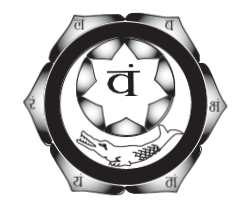
Key Attributes of the Sacral Chakra
Sacral Chakra primarily deals with the emotions, creativity, passion, and sexual energy in the human body which are its key attributes.
1. Emotions
The chakra helps to build the ability to release fear with ease promoting emotional stability and connectivity through joy, intimacy, pleasure, etc.
2. Creativity
The chakra is closely associated with creative energy that fosters artistic flow, innovation, problem-solving, and self-expression.
3. Passion
The deep desire is fueled by an inner passion that inspires individuals to pursue with intensity and dedication.
4. Sexual Energy
The chakra stimulates intimacy and pleasure promoting healthy sexual energy and fostering harmonious relationships.
Sacral Chakra States
The sacral chakra states are Blocked, Balanced, and Overactive describing the conditions of an individual. It is best to acknowledge the condition to take practical steps to enhance creativity, emotions, and sexuality.
Tabular Presentation of a Blocked, Balanced, and Overactive Sacral Chakra
| Sacral Chakra States | Characteristics | Symptoms/Signs | Impact (Physical & Emotional) |
| Blocked | Motionless energy Find it hard to express emotions and desires Absence of creativity and joy | Emotional instability Creative blocks Sexual issues Fear of change Addictive behaviors Guilt or Shame | Unable to experience pleasure or joy Trouble adapting to change Fear of intimacy Emotional vulnerability Lower back pain |
| Balanced | Free-flowing energy Able to express emotions and desires Flow of Creativity and sexual energy | Emotional stability Creative freedom Self-expression Healthy relationships Boost in Confidence, desires, and needs | Openness to new experiences Ready for emotional connections Healthy sexual expression Feel content and excited Creative expansion |
| Overactive | Excessive energy Intensity in desires and pleasures Difficulty in self regulation Unhappy with life | Extreme mood swings Hyper-addictive behaviors Overindulgence (food, alcohol, substances, etc.) Unhealthy attachment to sexual desires | Irresistible emotions Impulsiveness Feelings of guilt or self-blaming Obsessive behaviors More emphasis on physical pleasure |
Balancing the Sacral or Svadhisthana Chakra
The constant free-flowing of emotional energy, creativity, and sensuality is achieved through the act of balancing sacral or svadhisthana chakra. Some key points are as follows:
1. Physical Movement
The physical movement proves beneficial in releasing and stimulating the energy flow in the body. Involve in physical activities primarily focusing on hips and pelvis such as yoga, swimming, dancing, etc.
2. Meditation and Visualization
Meditation and visualization focusing on bright orange or vermillion colors activate the healing area and foster positive energy.
3. Dietary Supplements
The right dietary supplements supporting the Sacral Chakra prove beneficial to balance and nurture. Some suggested foods are oranges, carrots, sweet potatoes, pumpkins, nuts and seeds, black cherry tomato, Padrón pepper, coconut, oyster, lentils, etc.
4. Affirmations
Chanting or reciting positive affirmations also activates the positive energy vibrations, releasing negativity. Some suggestive chants from the Kundalini tradition are Om, Namo Guru Dev Namo, which translates as ‘I bow to the creative energy of the universe’ (Om), and ‘I bow to the divine wisdom within’ (Namo Guru Dev Namo). Some other affirmations can be: ‘I am Capable’. ‘I am passionate’. ‘I am emotionally satisfied‘. You can chant any positive affirmation you desire and continue to repeat it for better results.
5. Water Element
Keeping yourself hydrated and spending time more near the water bodies also proves to activate the energy as the sacral chakra is connected with the water element.
6. Emotional Healing
Emotional healing through therapy, self-analyzing, journaling, and working on resolving affected emotional trauma or relationships for improving the sacral chakra.
7. Creative Expression
Creative expression allows you to express your oppressed feelings and fosters you to connect with your inner self. Engage in creative activities such as painting, writing, crafting, or any form of self-expression.
8. Use of Essential Oils and Crystals
The use of essential oils and crystals also helps to activate the sacral chakra promoting emotional balance and healing.
Crystals and Essential Oils for Sacral Chakra Healing
Below are the crystals and essential oils for Sacral Chakra healing with their benefits.
| Crystals and their Benefits | Essential Oils and their Benefits |
| Carnelian for Creativity | Cinnamon for Creativity |
| Orange Calcite for Joy | Rose for Love |
| Gold-colored Tiger’s Eye for Confidence | Jasmine for Confidence |
| Moonstone for Intuition | Clary Sage for Clarity |
| Amber for Healing | Patchouli for Balance |
| Citrine for Energy | Ylang-Ylang for Sensuality |
| Red Jasper for Grounding | Sandalwood for Grounding |
| Sunstone for Vitality | Orange for Uplifting |
Yoga Asanas (poses) for Balancing Sacral or Svadhisthana Chakra
Some effective Yoga asanas (poses) for balancing sacral or svadhisthana chakra are as follows:
1. Bound Angle/Butterfly Pose (Baddha Konasana): It is best for the hips and stimulates emotional release.
2. Bridge Pose (Setu Bandhasana): It improves pelvic flexibility and stimulates the lower abdomen.
3. Pigeon Pose (Eka Pada Rajakapotasana): It helps to release stored emotions.
4. Child’s Pose (Balasana): It relaxes the body and boosts emotional submission.
5. Goddess Pose (Utkata Konasana): The pelvic region strengthens developing confidence.
6. Low Lunge Pose (Anjaneyasana): It stretches the lower abdomen as well as opens the hips.
7. Cobra Pose (Bhujangasana): The energy flow increases and provides flexibility to the lower back.
8. Cat-Cow Pose (Marjari-Bitilasana): It releases tension in the lower body as it mobilizes the spine.
Conclusion
The act of balancing sacral or svadhisthana chakra fosters creativity, satisfying relationships, and sexual energy. For a balanced energy flow, practicing yoga, affirmations, eating dietary supplements, drinking water, and spending time near the water bodies proves to be fruitful.
Written By: Anjali B
Benefits of Joining a Yoga Retreat
Today’s busy world affects the individual’s physical, mental, and emotional well-being. Many people apply or follow different methods to improve their well-being. Yoga Retreat is one of the several methods that is gradually gaining popularity. In simple words, Yoga Retreat is a journey to self-discovery and healing. There are several benefits of joining a Yoga Retreat with physical, mental, and emotional healing being prime benefits.
Yoga Retreats are mostly performed in a peaceful setting including yoga sessions, meditation, mindfulness practices, nutritious meals, accommodation, and full relaxation time. The yoga retreat types differ according to the preference and experience level of the practitioners. Yoga retreat helps individuals in their transformative journey of personal growth, awakening, and a healthier lifestyle. It acts as a bridge in the life of an individual to connect with nature, spirituality, and themselves.
Benefits of Joining a Yoga Retreat
Physical, Mental, and Emotional well-being
Yoga retreats are vital to the physical, mental, and emotional aspects of your health and well-being. The improvement in flexibility, strength, and posture physically boosts confidence. Reducing stress gives clarity and enhances focus mentally. Self-awareness and awakening through healing nurture them emotionally. The body, mind, and soul balancing is a treasure to experience for the practitioners.
Develop Your Yoga Practice
Yoga retreats instill the habit of practicing yoga daily. The daily yoga sessions, workshops, and guidance from qualified instructors provide a framework for developing yoga practice. The new technique of learning refined your skills and built a deeper knowledge of yoga and its philosophy. You can also integrate restorative yoga, Vinyasa flow, or even meditation retreats to enhance your yoga practice.
Stress Minimization and Relaxation
Yoga retreats are performed in a peaceful setting which minimizes stresses of the daily life. The diverse activities, healthy meals, and peaceful surroundings focus on relaxation and enhance their mood towards positivity and calmness. It gradually minimizes stress and helps them be productive or have clarity.
Reconnect with Yourself
The yoga retreat is one of the best ways to reconnect with yourself. In this hustle and bustling world, everything is chaotic forcing an individual to disconnect from themselves. The perfect ambiance and different activities on a Yoga retreat help them to self-realize and awaken for their betterment.
Nourishing Food and Detox
Yoga retreats help individuals to adopt a healthy lifestyle and eating habits. Healthy nourishing food is the key to a long life and better day-to-day performance of an individual. As there is a popular saying. ‘You are what you eat’. So, you develop a habit of eating nourishing foods that detoxify the body for your well-being. The process boosts your metabolism improving your guts and increasing body energy levels.
Community and Connection
Yoga retreats also serve as a good platform to meet like-minded individuals. It can be a great learning platform as well as build a community where you get to connect and create meaningful relationships.
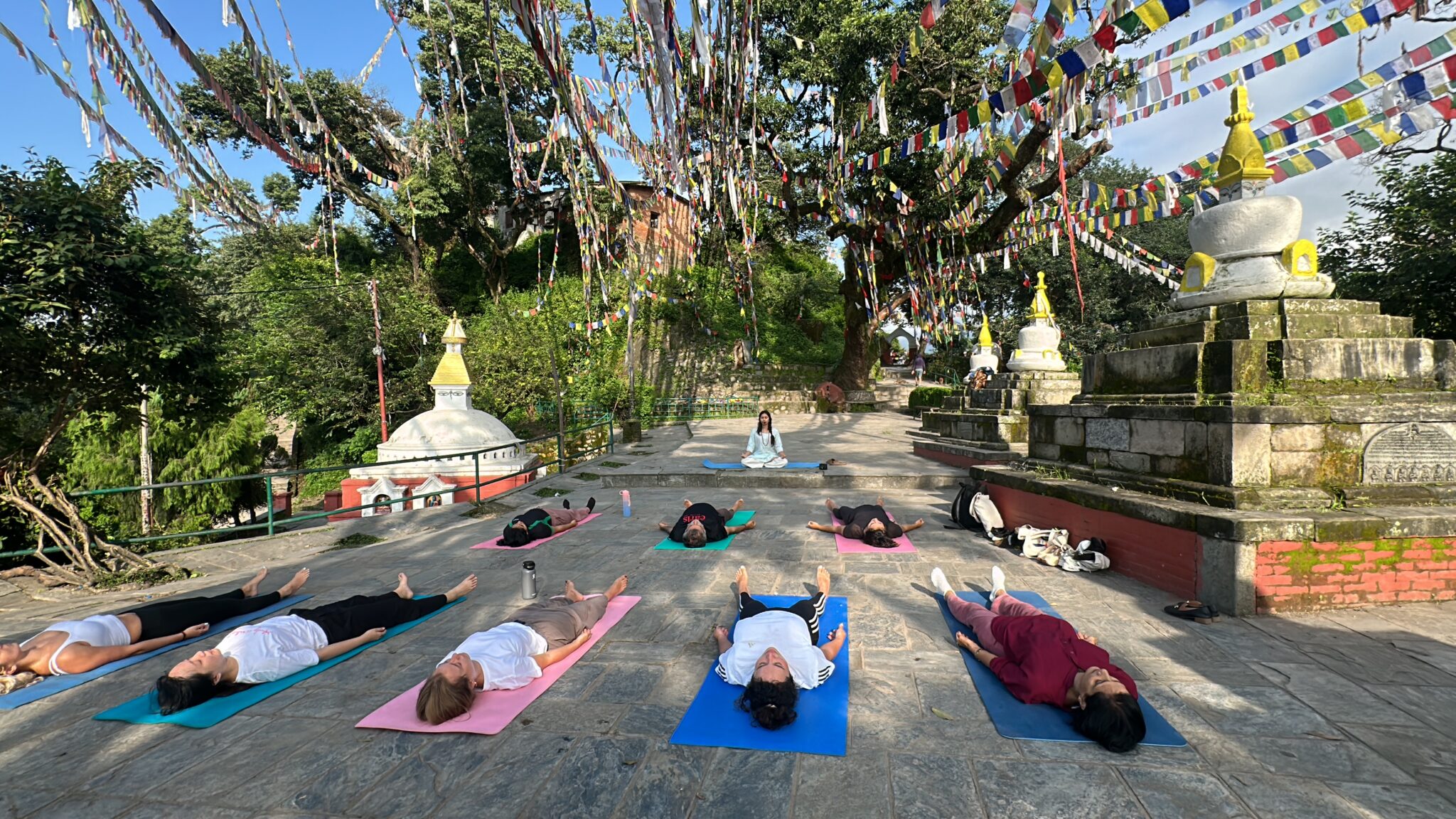
Drawbacks of Yoga Retreats
There are multiple benefits of attending a yoga retreat. However, there are a few drawbacks of Yoga retreats that are as follows:
Cost
Cost is the biggest element that determines your preferences for Yoga retreats. The location, retreat types, yoga sessions, meals, duration, and accommodation and amenities are some deciding factors.
Time Commitment
Yoga retreat duration varies from 3-5 days to several weeks. The time commitment of the practitioners are key factor in achieving their desired goals. It is challenging for many individuals to manage time between professional and personal responsibilities.
Intensive Schedule
Based on experience level, yoga retreats vary for beginner and advanced. Beginners go for slow and relaxing sessions while most advanced opt for intensive schedule sessions. It demands a long time, and tough discipline to attain your goal which can be exhausting.
Limited Flexibility
The well-organized schedule of several Yoga retreats offers limited flexibility for practitioners. Those who love relaxed flexible time can find it controlling.
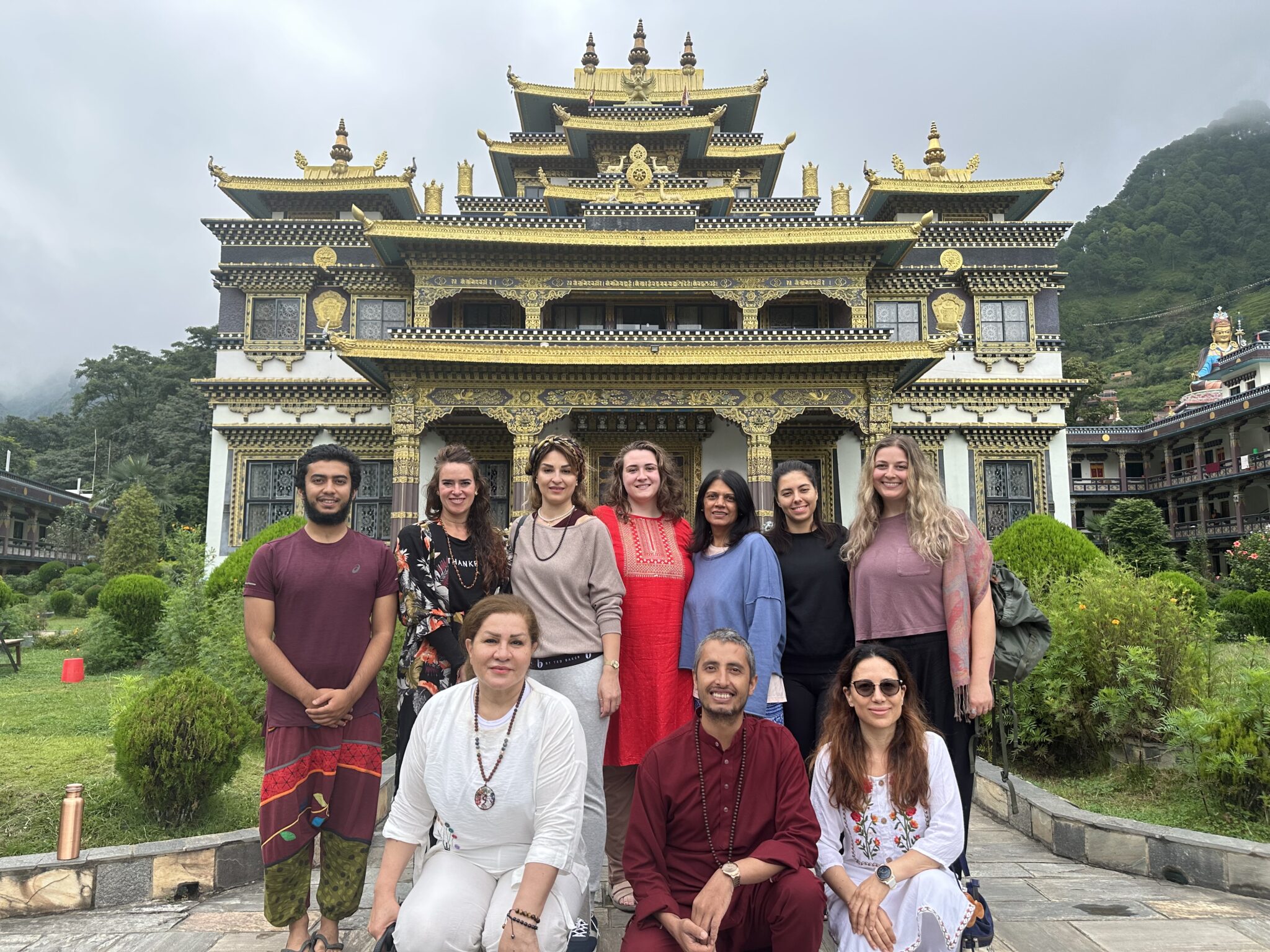
Best Yoga Retreat South Asian Destinations
The South Asian nation India is the origin of ancient Yoga dating back to 5,000 years. Ancient texts such as the Vedas and the Upanishads are a reference to yoga. Originally as a spiritual, mental, and physical practice, Yoga was developed to achieve self-analysis and awakening. Being the pioneer of Yoga, some of the best Yoga Retreat South Asian destinations are as follows:
Nepal
The nation with towering Himalayas has abundant lush greenery and a pleasant atmosphere. The ambiance of Nepal with its rich cultural heritage and scenic landscapes is suitable for Yoga Retreat. The cultural, natural, and spiritual connection can be a getaway for ideal Yoga Retreats. Kathmandu Valley, Pokhara, and Langtang are some suitable places.
India
The abode of Yoga origin is renowned as the ‘Yoga Capital of the World’. The holy rivers, serene historical towns, lush greenery, and rich cultural landmarks along with diverse landscapes offer a perfect setting for Yoga Retreats. Rishikesh, Kerala, Dharamshala, and Goa are some ideal places in India.
Sri Lanka
The exotic destinations in Sri Lanka such as lovely beaches, vast jungles and greenery, and ancient heritage sites are perfect for Yoga Retreats. The rich culture, tranquility, and natural beauty create a phenomenal setting for practicing yoga and meditation. Kabaragalla, Mirissa, and Kandy are some best destinations.
Bhutan
The landlocked nation Bhutan with its breathtaking landscapes, strong Buddhist culture, and lush greenery provides a perfect setting for Yoga Retreats. The spiritual aura in Bhutan is exceptional offering a unique approach while practicing yoga and meditating. Several monasteries and Dzongs, Phobjikha Valley, and Bumthang Valley are the best places.
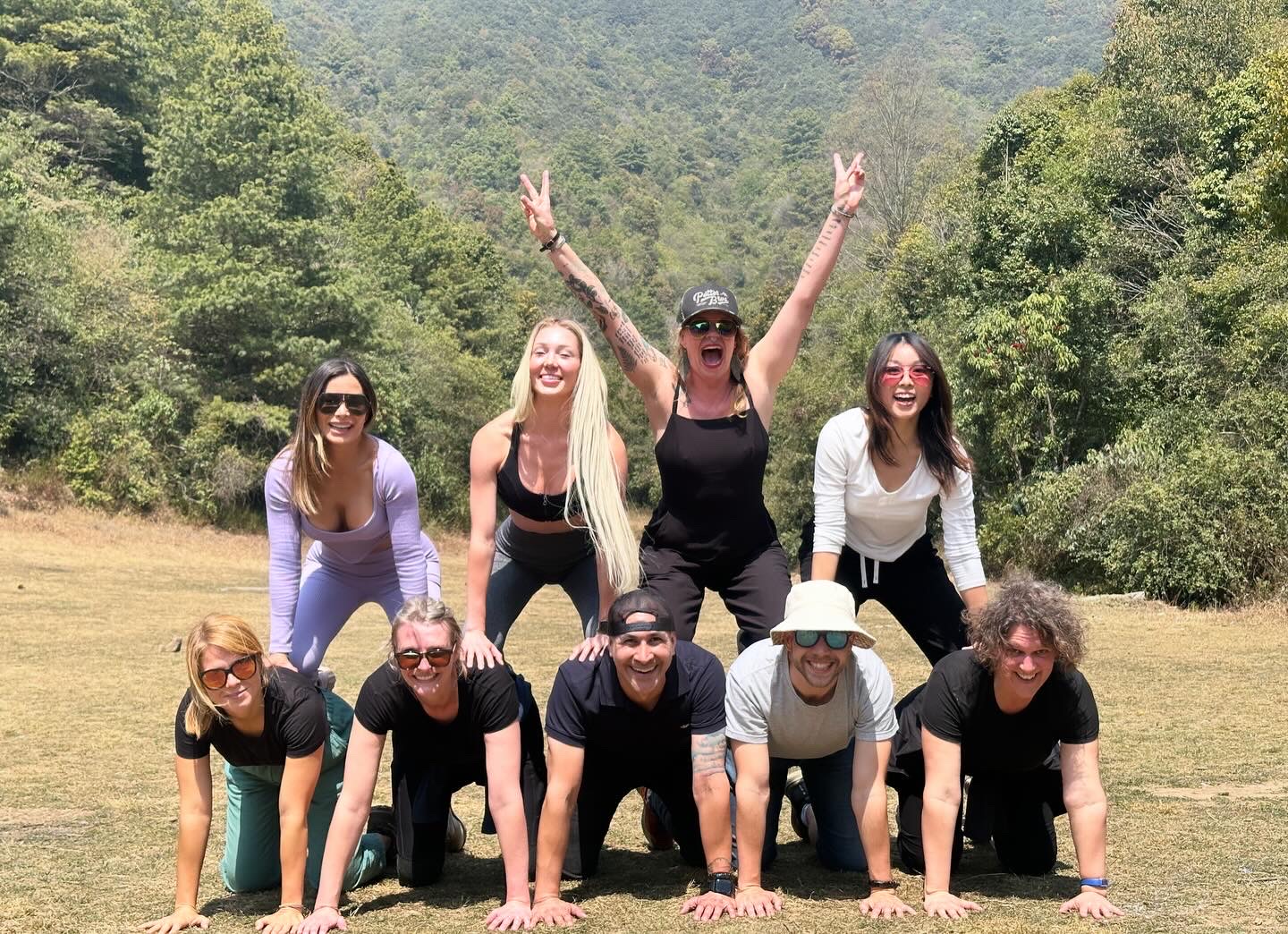
Key Factors for an Ideal Yoga Retreat
The ideal Yoga Retreat solely depends on your preferences and goals. Select wisely considering the right type, location, budget, experience, instruction, and duration. Having clarity on what purposes you are going for and what you seek to get can be a gateway to a life-changing experience. The key factors to consider in the ideal Yoga Retreat are as follows:
Define Your Primary Goals
What kind of yoga retreat you are looking for? If you seek relaxation, restorative, or intensive schedule, or advanced teachings? Defining primary goals helps you to align with your desired yoga retreat.
Select the Location
Select the location that aligns with your retreat goals and your preferences. Consider the culture, climate, nature, ambiance, or luxury and activities you prefer.
Choose the Right Type of Retreat
The right type of retreat helps you keep engaged in achieving your primary goals. Choose the right type of retreat fitting your interests such as spiritual, adventure, detox, yoga teacher training, etc.
Select based on the Experience Level
The practitioners’ experience level ranges from beginners to advanced. Thus, select the yoga retreat that suits your experience level for a relaxing and memorable experience.
Select the certified yoga teachers
The qualified instructor’s experience proves to be beneficial for Yoga retreats. Thus, select experienced and certified yoga teachers specialize in different yoga styles (Hatha, Vinyasa, Ashtanga, etc.) and can combine meditation, and pranayama techniques for a better experience.
Decide the Retreat Duration
The retreat duration varies from 2-3 days to several weeks depending on the retreat types. Decide the retreat duration by prioritizing your commitments, schedule, and your preferred yoga types.
Consider the Accommodation and Amenities
Comfort also defines the best experience of your Yoga retreat. Thus, consider the suitable accommodation with a good environment set up and best amenities. Select the accommodation and amenities based on your budget and preference (simple or luxury).
Evaluate the Food and Dietary Needs
Suitable food and dietary supplements add more value to your Yoga retreat which includes diverse meal plans (Ayurvedic, or detox). Therefore, evaluate the food and dietary needs and select your preferences (vegetarian, vegan, or organic). Specify your dietary needs (dairy-free, gluten-free, or food allergies) for a healthy experience.
Choosing the right yoga retreat
Reading reviews and testimonials is the best way to choose the right yoga retreat. It provides you with insights regarding the quality, professionalism, retreat types and packages, and activities. It guides you on what to expect and which is the best yoga retreat to choose from.
Budget Considerations
Budget plays a significant role for any purpose. Select the right Yoga retreat but also consider a budget while selecting the yoga retreat that aligns with your preference. Luxury Yoga Retreat offers high-end services.

Conclusion
Yoga Retreat is a joyous experience as there are numerous benefits of attending a Yoga Retreat. Today’s busy world is very demanding and getting physical, mental, and emotional benefits is a boon. Yoga Retreat is such a blessing for those seeking contentment, spiritual enhancement, and personal awakening. Selecting the right retreat type aligning with your goals and preferences proves to be a life-changing experience for your health betterment and personal growth. Yoga Retreat is a perfect way to heal, rejuvenate, and rediscover yourself.
Written By: Anjali B
Top 7 Yoga Poses for Youthfulness
In the present world, Yoga is an integral part of the lives of human beings. An excellent practice of maintaining physical and mental vitality into old age through the development of flexibility, strength, and clarity of mind. It aids in the proper flow of energy for reducing stress and maintaining well-being. We present the top 7 yoga poses for youthfulness or anti-ageing where one feels re-energized, improves posture, and maintains a vibrant and youthful spirit with regular practices.
Top 7 Yoga Poses for Youthfulness or Anti Ageing
A. Ustrasana (Camel Pose)
Ustrasana, or Camel Pose, is a deep backbend yoga pose. In this pose, a yoga practitioner kneels and curves the back, reaching hands toward the heels. It’s among the 26 asanas in the Bikram Yoga series.
Steps
- Kneel on the mat with your feet flat on the floor, toes pointed backward.
- Hips aligned with knees and the spine softly arched.
- Keep the chest open, head up, and elbows back.
- Slowly place your hands on your heels (or lower back for beginners).
- Look up with a slight backward tilt.
- Keep your neck soft and hold for 10-20 seconds while breathing hard.
- Release by lifting your chest upwards and with the support of your hands, rise to an upright position slowly.
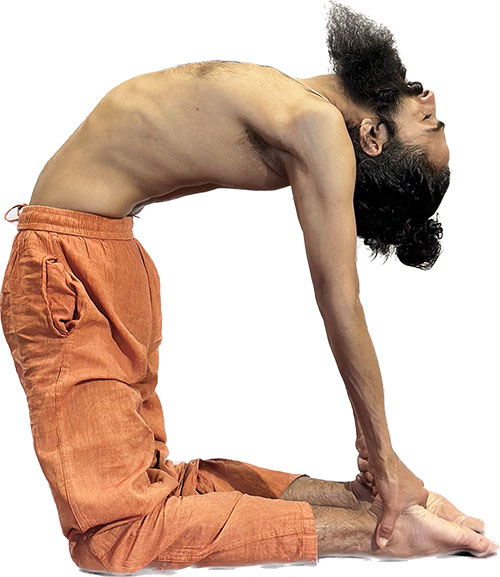
Ustrasana Benefits
- This backbend pose opens up the chest and gives a good stretch to the entire front of the body, which enhances circulation and stretches the stiffness out, promoting a youthful, energetic posture.
- Ustrasana supports detoxification and helps in maintaining weight by improving the metabolic rate.
- It expands the chest and increases lung capacity thus stimulating the health chakra.
- The forward stretch of the body opens up the abdominals, hip flexors, and quadriceps.
- It cures flabby shoulders and correct postures in case of regular practice.
- The organs in the digestive system are stretched which is very helpful for metabolism and digestion.
- It minimizes back problems and makes the spine flexible.
Ustrasana Side Effects
- Improper practice results in injury to the lower back or neck.
- Therefore, this yoga posture is better avoided if one has certain back and neck problems for some time.

B. Tadasana (Mountain Pose)
Tadasana or mountain pose is a basic standing posture that stands straight, with the feet together, and legs straight. The body aligns with hands alongside the body, a wide chest, arched shoulders, and the crown of the head upwards.
Steps
- Stand on a mat with a straight-legged posture, the feet together, heels slightly apart, and wide-set toes.
- Draw your weight evenly into the body and slowly lift your kneecaps.
- Open your chest wide, straighten your spine, and keep your shoulders aligned over your hips.
- Stretch your hands straight up with palms facing forward.
- Tilt the crown of the head upwards without tilting the chin upwards but keeping it parallel to the ground.
- Remain in a steady pose for 15-30 seconds, breathing slowly.
- Bring your hands down and back into a normal standing position.
Tadasana Benefits
- This asana supports a straight posture by giving strength to the core and spine and reduces the ageing signs due to better body mechanics.
- The leg and foot muscles strengthen thereby contributing to better balance and coordination.
- Proper body alignment improves blood circulation and respiration.
- It calms the mind and improves concentration promoting mental focus.
- It increases body awareness and balance and helps efficient movement ultimately promoting weight management.
Tadasana Side Effects
- The improper alignment of hips, feet, or shoulders can cause strain in the lower back or knees.
- Avoid knee locking for those people having knee problems.
C. Chakrasana (Wheel Pose)
Chakrasana, or Wheel Pose is a backbend asana in an advanced form where practitioners lift their body into a full curve. The other name for this asana is Urdhva Dhanurasana.
Steps
- Lie flat on the mat and bend your knees and feet.
- Keep hip-width apart and place your hand and fingers directed toward your shoulders with your elbows bent.
- Lift your hips upward facing with hands and feet pressing into the mat.
- Straighten the arms, and lift the back in an arch.
- Continue pressing the feet and hands down while lifting the chest and head.
- Push back, keeping your aim to get a deep backbend.
- Keep your legs and arms straight with an open chest.
- Keep on inhaling and exhaling throughout while holding for 15-30 seconds.
- Slowly bend the elbows and knees, gently lay your back on the mat, and rest to release.
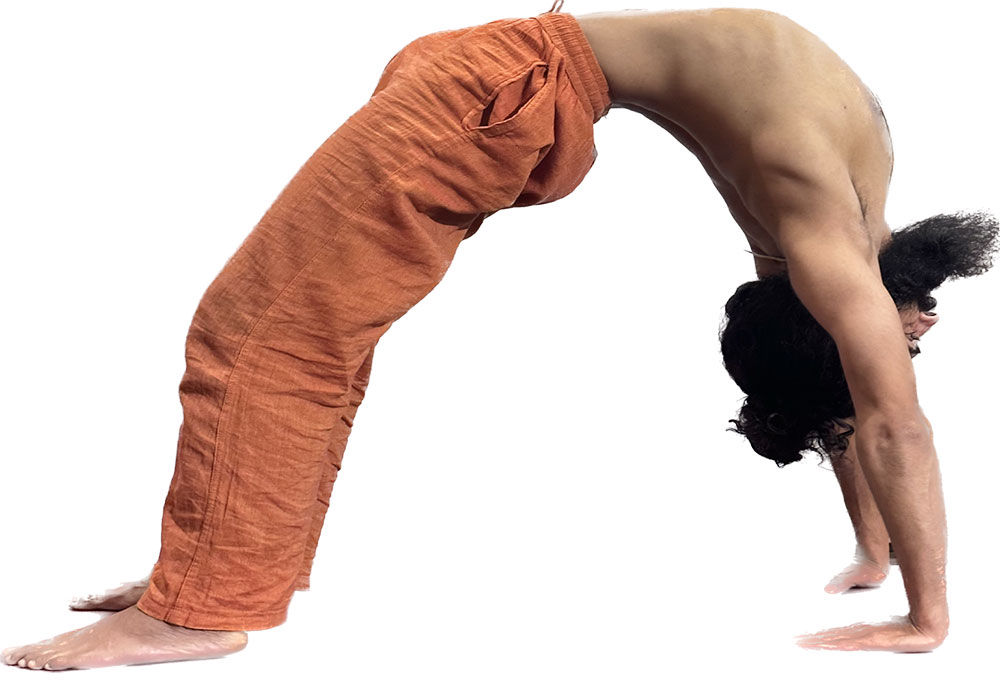
Chakrasana Benefits
- It makes the spine, chest, and shoulders more flexible, hence rejuvenating the nervous system and contributing to a feeling of vitality and youthfulness.
- The core, arms, and legs strengthen and stabilize.
- The breathing progresses with an improvement in chest and lung capacity.
- It activates the nervous system and promotes vitality.
- Regular practice of this pose gives back pain relief.
- Proper blood circulation and muscle strengthening help to burn body fat resulting in weight loss.
Chakrasana Side Effects
- The incorrect practice may cause strain on the lower back or neck.
- Avoid this pose if suffering from spinal problems or any neck problems.
D. Vajrasana (Thunderbolt Pose)
Vajrasana, or Thunderbolt pose, is the only yoga posture that can be done on a full stomach. This posture involves sitting on the knees with the calves underneath the thighs.
Steps
- Kneel on the mat, and put your toes together and heels apart.
- Rest on the bottoms and place the gap in between your heels.
- Set your hands in Jnana or Chin Mudra, and place them on the knees.
- Keep your back straight and close your eyes.
- Hold for 30 seconds to a few minutes, focusing on deep and sound breathing.
- Slowly come out of this pose by sitting back and lengthening your legs straight out in front of you to release.
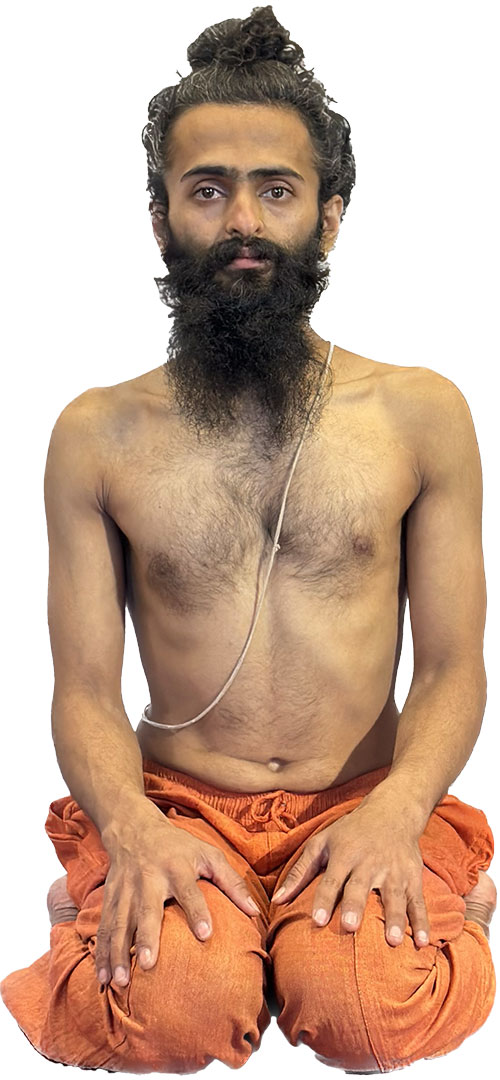
Vajrasana Benefits
- This asana calms the mind reducing stress and stimulating peace and clarity. It further promotes staying healthy and youthful.
- Performing Vajrasana after meals decreases bloating allowing proper digestion and regulating metabolism. It indirectly supports weight loss.
- The overall lower body postures strengthen, align, and improve while sitting in this pose regularly.
Vajrasana Side Effects
- Avoid this pose if one has injuries to the ligaments either at the knees or ankles.
- Those with severe pains of arthritis, intestinal ulcers, and hernia patients should not attempt this pose.
E. Marjari-Bitilasana (Cat-Cow Pose)
Marjari-Bitilasana, or Cat-Cow pose, is an active movement of the spine that flows between two postures. During the marjari pose, the practitioner rounds the back and tucks the chin toward the chest. During the bitilasana pose, the back is arched, and the chest is raised.
Steps for Marjari-Bitilasana
- Set yourself in Bharmanasana (tabletop position), keep the hips directly above the knees and the hands shoulder-width apart.
For Bitilasana (Cow Pose)
- Inhale as you allow the tummy to drop toward the mat, lifting your chest and tailbone.
- Open your chest and bend your back, looking slightly upward.
For Marjari (Cat Pose)
- Exhale as you round your back toward the ceiling.
- Tuck your chin in toward your chest and draw your navel toward your spine.
- Extend the stretch by pressing the mat with your hands and knees.
- Continue with these two postures, consecutively, in sync with your breath.
- Practice 5-10 rounds of the Marjari-Bitilasana pose effortlessly with every inhale and exhale.

Marjari-Bitilasana Benefits
- Marjari-Bitilasana (Cat-Cow Pose) stimulates internal organs for a youthful and energetic body.
- It improves spinal flexibility activating body mobility and strengthening abdominal muscles.
- The back, neck, and shoulder stiffness gets relieved.
- The improvement in digestion increases metabolism helping in weight loss.
- It promotes better breathing sequences.
Marjari-Bitilasana Side Effects
- People may experience lower back or spine irritation if the movements are not done properly.
- The stiffness in the neck or back due to overstretching.
F. Pawanmuktasana (Wind-Relieving Pose)
Pawanmuktasana or Wind Release Pose is a body in a supine position where you bring your knees towards the chest and interlocking hands.
Steps
- Lie down on your back on the mat.
- Lengthen your neck, and shoulders down.
- Gently bend both knees, take toward the chest, and interlock both your hands.
- Interlock both hands on knees, squeeze up the abdomen, and hold both sides of an elbow (if you prefer it).
- Pull the navel inside as you exhale.
- Hold your back up and try taking your chin towards the knee.
- Keep holding for 15-30 seconds with deep breaths.
- Drop your navel down and keep your lower back down.
- Exhale and keep down your upper back.
- Stay as it is for a few breaths.
- Stretch your legs down and relax.
Pawanmuktasana Benefits
- Pawanmuktasana or Wind-Relieving Pose aids digestion promoting deep relaxation and developing a youthful feeling.
- Regular practice stimulates bowel movement, improves digestion, and helps in reducing body weight.
- It stimulates the digestion organs, improves metabolic functions, and strengthens the abdomen.
- The asana eases lower back discomfort and relieves stress.
Pawanmuktasana Side Effects
- Inappropriate posture and alignment strains the back or hips.
- People suffering from knees or back should carefully attempt this pose.
G. Paschimottanasana (Seated Forward Bend)
Paschimottanasana or Seated Forward Bend pose, where practitioners stretch out their legs in a straight position, lengthen the spine, and expand the chest. Then, bend forward to reach feet, ankles, or toes as their flexibility and rise raising hands slowly. The other name for this asana is Intense Dorsal Stretch.
Steps
- Sit on the mat and bring both legs in front of you with pointed toes inward.
- Keep your back straight, lengthen the spine, and expand the chest.
- Inhale and raise both hands, extending the spine further.
- Bring the hands in alignment with the ears.
- Exhale, bring the chin out, and bend down as you can.
- Reach for your feet, ankles, or toes as your flexibility.
- Bring your elbows down on either side of the feet.
- Bring your forehead to rest on your legs.
- Raise your hands slowly in line with your ears.
- Inhale, extend the spine upward.
- Exhale, bring both hands down, and release.
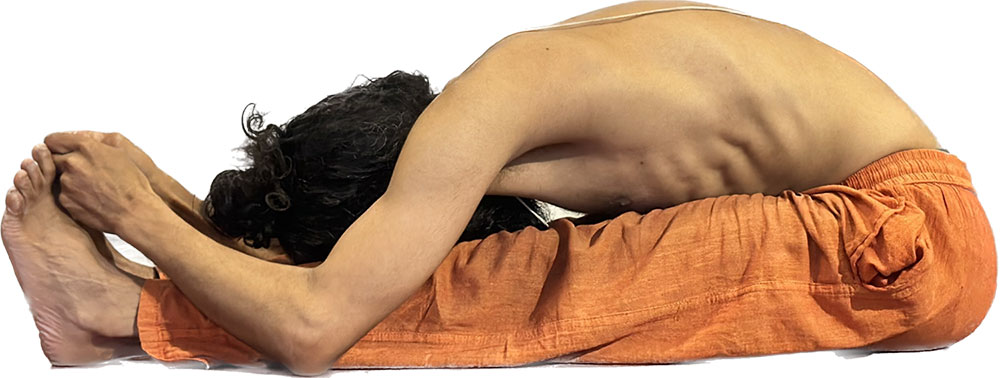
Paschimottanasana Benefits
- Paschimotanasana or Seated Forward Bend pose promotes youthfulness by giving clarity and flexibility to the mind.
- The liver and spleen function properly and strengthen the lumbar and sacral regions.
- One of the ideal poses for people with diabetes.
- It balances metabolism, builds up appetite, and improves digestion for weight loss.
- The flexibility in the body improves due to stretching.
- People get relief from hamstring, calves, neck, and lower back muscle pain as it eases the nervous system.
Paschimottanasana Side Effects
- The inappropriate practice of this pose causes strain on the lower back, shoulders, neck, or hamstrings.
- Be careful while stretching if the practitioner suffers from lower back pain.
Conclusion
The regular and proper practice of these yoga poses enhances flexibility in the body and keeps both mind and body youthful. Improvements in digestion, comfort in the nervous system, and emotional balance bring a positive approach to life, ultimately slowing the ageing process.
Written By: Anjali B
Magical Benefits of Maha Mrityunjaya Mantra
The Maha Mrityunjaya Mantra is a powerful sacred mantra associated with longevity, protection, healing, and sound health. Lord Shiva’s mantra is mentioned in Hindu Vedas such as Rig Veda (7.59.12), Yajur Veda (3.60), and Atharva Veda (15.1.17) affirming its significance. People believe regular chanting of this mantra calms the soul and removes fear. This mantra is so powerful that people think it protects from misfortunes and prevents premature death. There are several magical benefits of Maha Mrityunjaya Mantra in an individual’s life as this mantra is also known as the ‘Death Conquering Mantra’.
The Maha Mrityunjaya Mantra in Sanskrit
ॐ त्र्यम्बकं यजामहे सुगन्धिं पुष्टिवर्धनम्।
उर्वारुकमिव बन्धनान्मृत्योर्मुक्षीय मामृतात्॥
English Transliteration
Aum Tryambakam Yajamahe Sugandhim Pushtivardhanam,
Urvarukamiva Bandhanan Mrityor Mukshiya Mamritat.
Meaning
Aum, we bow to the three-eyed Lord Shiva,
We seek to enhance the vitality and fragrance in us,
May, he releases us from the bondage of death effortlessly,
And may, He bless us with immortality.
Word-for-word Explanation
Aum (Sacred Sound)
The magical sound Aum, the primordial sound is the fountainhead of all Vedic Chanting. Mundaka Upanishad says: “Aum is the bow, the individual self is the arrow, and the spirit is the target. One should then become one with it like the arrow that has penetrated the target.”
Trayambakam (Shiva-the third-eyed one)
The third eye represents Wisdom, knowledge, and destruction that symbolize divine perception. It is used to appeal to Lord Shiva’s blessings for protection and liberation.
Yajamahe (We Worship, We Surrender)
The act of communicating with the divine to attain the divine’s blessings and protection by dedicating oneself through the method of worship and surrendering.
Sugandhim (Fragrance)
The whole universe has a presence of Divine’s Fragrance that purifies and brings harmony.
Pushtivardhanam (Nourishment and Strength)
One who nourished the infinite life, sustaining the energy of the universe. The self-existing principle of life. The power behind all that is.
Urvarukamiz Bandhanaa (A cucumber freed from its vine)
The soul ripened by his grace freed from all the enmeshments of life releases itself from the creeper of life.
MrityorMukshiya (Liberate me from Death)
A prayer summoning divine grace to liberate from the cycle of birth and death.
Mamritat (Grant me immortality)
An appeal for divine blessings to transcend mortality and attain spiritual liberation.
Various Names for Maha Mrityunjaya Mantra
There are various names for Maha Mrityunjaya Mantra which ultimately connects with the divine for protection, healing, resilience, and liberation from death. Some of the names are:
Rudra Mantra: It associates itself with Lord Shiva’s fierce form, Rudra.
Tryambakam Mantra: It names itself after the three-eyed form of Lord Shiva, symbolizing the past, present, and future, along with the ability to perceive beyond the ordinary.
Immortality Mantra: Highlights its ability to bestow health, longevity, and protection.
Death Conquering Mantra: The mantra provides healing by overcoming death and granting longevity.
History of Maha Mritujanya Mantra
The Maha Mrityunjaya Mantra is a composite hymn attributed to Vasiṣṭha Maitrāvaruṇi that first appeared in Rig Veda (7.59.12). It is associated with the legend of Markandeya. The parents, Rishi Mrikandu and his wife Marudmati prayed for a child to Lord Shiva. They were granted a child but were destined to die young. Markandeya was a brilliant child and very much devoted to Lord Shiva. Yama, the god of death came to take his life on his 12th birthday. Markandeya also came to know all about his birth’s reality and he immediately surrendered himself to Lord Shiva. His devotion impressed Lord Shiva and he granted him the boon of immortality. Lord Shiva blessed him with a death-defying powerful mantra, the Maha Mrityunjaya Mantra. Ultimately, this mantra saved him and became the divine’s blessing as a source of eternal protection.
Importance of Maha Mrityunjaya Mantra
The Maha Mrityunjaya Mantra is associated with Faith Healing and Prayer Healing as it is specially meant to ward off calamities, accidents, adversities, illness, etc. Does this mantra work? Well, faith is the only answer. If you chant this mantra with faith and full devotion, the pranic flows start within the body. The various mental wave patterns build up enhancing physical well-being, long life, and warding off misfortunes. In a healthy body state, feel positive energy, inspiration, and strength. This is a Vedic mantra with healing powers. So, surrender yourself to the divine and chant this mantra and by the grace of the divine, it can work wonders.
Magical Benefits of Maha Mrityunjaya Mantra
1. Longevity and Protection
There is a strong belief that chanting this mantra protects from untimely demise and misfortunes increasing the longevity of the person.
2. Healing Power
The mantra attains abundant healing power properties which are beneficial for the physical health of the person. Daily reciting the mantra provides relief from illness and minimizes the negative effects of chronic diseases.
3. Spiritual Awakening
Reciting the mantra with full devotion and passion creates a positive effect on the mind, body, and soul of the person. Further, it aids them in awakening spiritual consciousness.
4. Protection from Negative Energies
The powerful mantra channels all positive energies. Thus, chanting this mantra regularly protects from negative energies as it acts as a safety net against all harmful influences.
5. Spiritual Liberation
The mantra is also fondly called the ‘Mantra of Liberation’. People believe it guides the soul toward immortality and eternal peace, transcending the cycle of birth and death.
6. Peace and Calmness
Reciting this mantra daily proves to bring inner peace and calmness reducing anxiety and stress. It further helps to lead a balanced life.
7. Deep State of Meditation
People can include this powerful mantra in their meditation sessions to attain a deep sense of meditation and connect with the high power.
8. Overcoming Obstacles
Reciting this mantra proves to overcome obstacles in the life of an individual on both material and spiritual levels. The positive energy attained from chanting this mantra guides the person to deal with the obstacles wisely.
9. Purification of the Mind, Body, and Soul
The regular chanting of the mantra takes out impurities and negative thoughts from the individual. It purifies the mind, body, and soul guiding them to spiritual clarity and self-realization.
How to Practice the Mahamrityunjaya Mantra
Time: Choose the early morning, the Brahma Muhurta to chant the mantra.
Rituals: Bath daily and wear clean clothes.
Place: Choose a quiet place and sit on a mat in a comfortable meditation pose.
Prepare Yourself: Keep your mind, body, and soul calm, focus, and close your eyes.
Recitation: Use a japa mala (108 rosary beads) and chant the mantra slowly with proper intonation. Follow the vibration and feel the resonance effect throughout the body. Focus on the meaning of the mantra while chanting.
Mantra Frequency: It is best to chant 11, 21, or 108 times daily. However, chant the mantra as your preference.
Closing: Complete the chant with your chosen frequency (11, 21, or 108) times. Pay gratitude to Lord Shiva, and seek his blessings for positive energies and longevity.
Conclusion
The Maha Mrityunjaya is a powerful mantra for longevity, sound health, healing, protection, and spiritual growth. Surrender to the divine while chanting the mantra with full devotion and passion. Achieve spiritual clarity through the purification of the mind, body, and soul and get blessed with positive energies, and power to overcome obstacles.
Written By: Anjali B
Agni Mudra and its Benefits
Himalayan Yoga Nepal is delighted to present an article on ‘Agni Mudra and its Benefits‘ to provide simple yet insightful facts to readers. Mudras have been a crucial part of yoga and meditation practices for thousands of years in ancient Hinduism and Buddhism traditions in Nepal and India. Mudras can be found in various forms. In a simple word, Mudra is a symbolic representation of hand or body gestures that channel the life force’s (prana) flow to balance the body’s energy. Among numerous Mudras, Agni Mudra is one of the most beneficial hasta mudras to stimulate and maintain the fire element within to improve digestion and balance the body and mind. Agni Mudra is popularly called Surya Mudra as it activates the Manipura Chakra or the sunlight-based plexus. Agni Mudra can be practiced by everyone irrespective of age or fitness level by consulting with an expert Yoga instructor.
How to Practice Agni Mudra
- Select a comfortable sitting position such as Sukhasana (Easy Pose), Padmasana (Lotus Pose), or Vajrasana (Thunderbolt Pose).
- Sit comfortably on a mat with a straight spine and relaxed neck.
- Rest your palms facing upwards on the thighs.
- Fold the tip of the ring finger against the base of the thumb.
- Held remaining fingers straight.
- Form the same Agni mudra with both hands.
- Maintain this position and gently close your eyes.
- Pay attention to your intention and breath.
- Take slow deep breaths.
- Relax and inhale positive energy and warmth.
- Exhale and release any tension or negativity.
- Continue this process for 10-15 minutes holding the Agni Mudra.
- Release the mudra, straighten your fingers, and relax your hands and body posture.
Benefits of Agni Mudra
Accelerates Digestion
The mudra stimulates the digestive fire which accelerates digestion. It clears toxins, improves metabolism, and reduces indigestion and constipation signs.
Reduces Stress and Tension
The mudra reduces stress and tension as it balances the fire element in the body and calms the nervous system. It further aids in maintaining the body temperature.
Controls High Cholesterol
It regulates the body’s metabolic processes which helps to lower cholesterol levels and controls high cholesterol.
Improves Vision
This mudra benefits eye health by improving vision as the fire element is associated with the eyes.
Balance Thyroid Hormones
This mudra prevents thyroid-related disorders as it helps to balance the thyroid-gland hormones by regulating the body’s metabolism.
Relieves Cold and Cough
The fire element produced through this mudra helps to warm the body by balancing the fire element relieving cold and cough.
Boost Self-Confidence and Willpower
It helps to boost self-confidence and willpower as this mudra balances the fire element within the body.
Relieves respiratory issues
The heat generated in the body helps in eliminating congestion and secretions from the lungs and sinuses. As a result, it relieves respiratory issues like asthma, bronchitis, etc.
Improves Blood Circulation
This mudra improves blood circulation which further impacts getting joint pain relief, and reduces inflammation.
Overcomes Obesity
Practicing Agni mudra daily helps to increase the metabolic rate and balances digestion which can result in overcoming obesity.
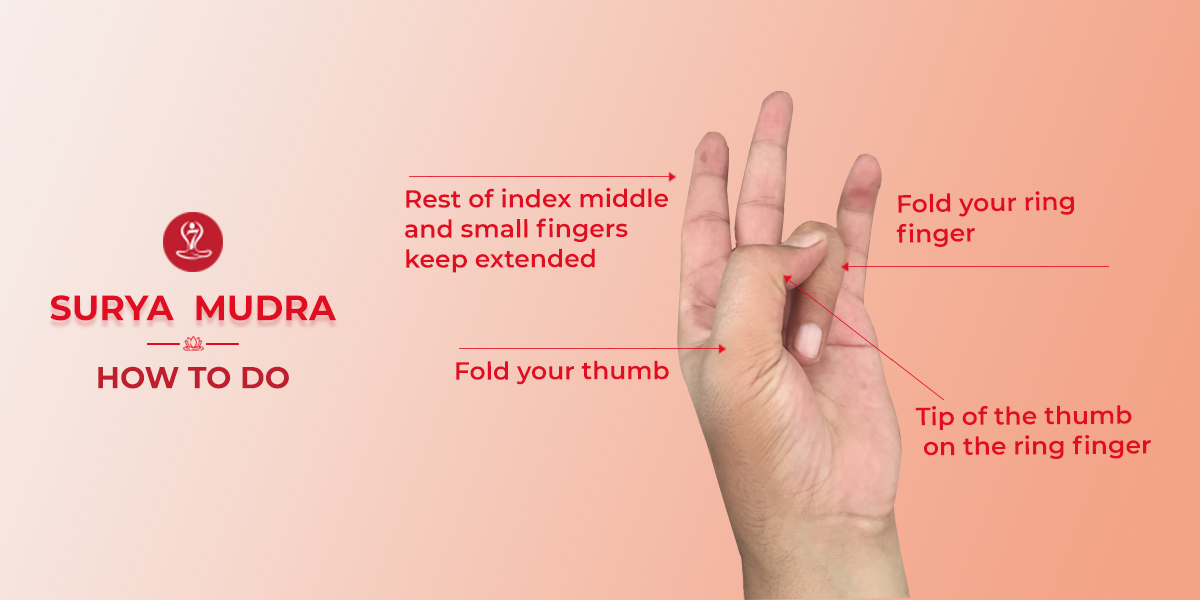
Agni Mudra Side Effects
Headaches or Dizziness
The improper practice of Agni Mudra can cause headaches or dizziness. So, consult or practice under the guidance of a qualified yoga instructor.
Excessive heat generation
Practicing Agni mudra for long hours can arouse digestive fire causing excessive heat generation in the body. As a result, observe an effect on the functioning of abdominal organs such as bloating, indigestion, or discomfort.
Uneasiness or pain
Practicing this mudra for long hours or in an improper way can cause uneasiness or pain in body postures and fingers.
Injuries or rashes
If not practiced correctly, one can experience injuries or skin rashes due to excessive sweating.
Imbalance and health issues
The imbalance of the five elements in the body can be seen while not correctly practicing Agni Mudra which leads to various health issues.
Things to Consider for Practicing Agni Mudra
- Consult or practice under the guidance of a certified yoga instructor if practicing Agni Mudra for the first time or have any queries related to it.
- This Agni Mudra is best when practiced by combining other Yoga asanas, with deep breathing and meditation.
- Start slowly on your pace and increase the duration and intensity gradually.
- Don’t practice Agni Mudra if you are having hormonal imbalances, during periods, weak health conditions, and high fire elements inside the body.
- Make sure to use proper breathing and relaxation techniques to get maximum benefit and comfort.
- Stop practicing if you experience any uneasiness or pain.
- Listen to your body and don’t force yourself.
Written By: Anjali B
10 Yoga Poses for Boosting Productivity
Himalayan Yoga Nepal presents an article on 10 Yoga Poses for Boosting Productivity. Firstly, what is Yoga? Yoga is an ancient creation that has evolved over a thousand years of incessant practice and grows with new styles. It is the practice of harmonizing, the body, mind, and soul or spirit. It combines asana or physical exercise, pranayama (breathtaking exercise), and meditation to enhance overall well-being. Yoga means the unity or connection of Body, Mind, and Spirit.
Yoga is a fundamental natural practice important for boosting or enhancing productivity or energy without any side effects. Holistically, it works to rejuvenate the physical body. Also helps to calm the mind and uplift the soul or spirit. It helps to boost the physical level, mental clarity, and emotional resilience which is crucial for maintaining quality performance in daily life. Physical and mental well-being is important for everyone.
Yoga Contributions to Boost Productivity
1.Enhances focus and mental clarity
Daily practice of yoga crucially helps to enhance the mental focus and clarity of things. Exercise like pranayama (breath control) and meditation is recommended.
2. Stress and Anxiety reduction
Yoga helps to reduce stress levels by lowering the stress hormone or cortisol level in the body. Relaxation poses like Shavasana or corpse pose and gentle sequence work to reduce the tensions and promote emotional balance and proper decision making.
3. Boosts physical energy and well-being
Yoga helps to improve oxygen flow and reduce stiffness caused by sedentary habits. Surya Namaskar/Sun Salutation is a dynamic posture for boosting energy and well-being.
4. Encourages time management
Yoga brings pureness and celerity over you which encourages your daily activity within a particular time.
5. Increased the level of creativity and problem-solving
Stable minds always work differently and perfectly. Yoga helps your blood circulation perfectly with the help of a headstand or downward dog posture and helps to promote mental flexibility and fresh perspective.
6. Improves mental and physical stamina
Yoga fundamentally helps to promote mental and physical energy level endurance by stretching the body and calming the mind.
7. Enhances better sleeping
Yoga Nindra is one of the best yoga postures that enhance your productivity level. Better sleep is necessary to improve stamina.
8. Remove physical discomfort and enhance posture
Yoga helps maintain body balance by practicing different poses. Spending at least 10 to 15 minutes daily can improve overall stability and well-being. Physical discomfort like back pain, spinal issues, and knee pain can be reduced after the yoga practice.
9. It helps to increase self-awareness
Yoga increases self-awareness of your body, mind, and soul. It fosters mindfulness, tranquility, and bliss that guides you to identifying your unproductive habits like multitasking, or overworking.
10. Promote long-term health
Yoga has no side effects which you can do in your daily life which always focuses on enhancing your long-term health. It reduces your tension and promotes your focus positively.
10 Yoga Poses for Boosting Productivity
1. A seated cat-cow stretch
Sit in a chair with your feet on the floor. Put your hands on your knees. Inhale, bend your back and lift your chest (Cow Pose). Inhale and round your back and rest your nose on your chest (Cat Pose).
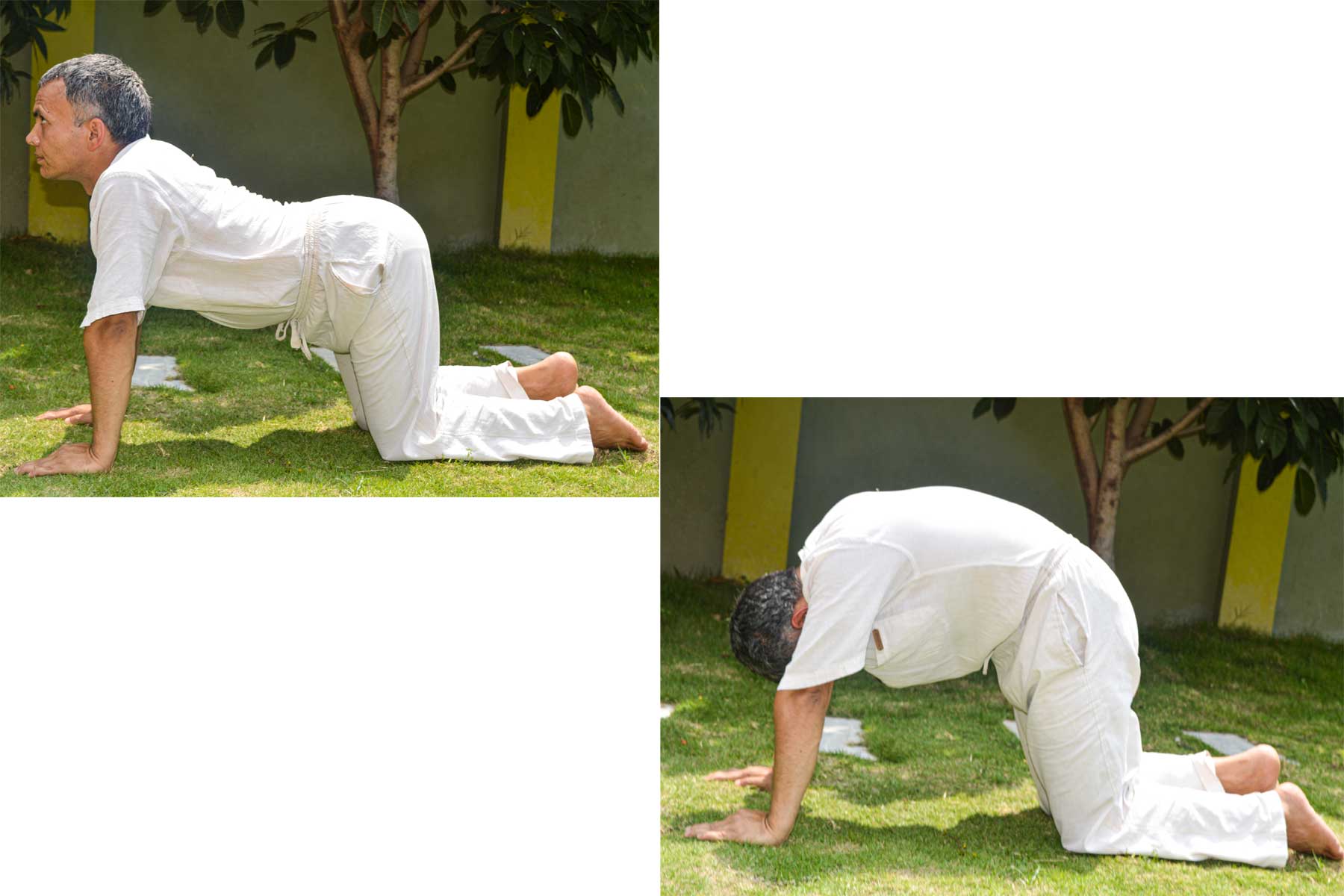
2. Bend the seat forward
Sit on the edge of a chair. Hinge forward from your hips, hang under your head, and reach down.
3. Seated spinal bend
Sit with your legs straight. Place your right hand on the back of your chair and your left hand on your right knee. Looking over your shoulder, twist the pole to the right. Repeat on the other side.
4. Eagle arm stretch
Extend your arms forward; cross one arm over the other, and wrap your elbows around each other so that your palms are facing each other. Raise your elbows slightly.
5. Throat roll
Sit tall with your nose to your chest. Slowly roll your head in a circle. After a few rounds, turn around.
6. Sit side stretch
Sit on both feet. Raise your right arm over your head and lean your left arm against the chair. Repeat on the other side.
7. Wrist elbow and finger stretch
Extend your arms forward, palms up, and gently pull your elbows back with the opposite hand. With the extension of the elbow.
8. Sitting pigeon Posture
Sit with your back straight. Cross your right ankle over your left thigh. Extend your right leg and lean forward slightly to extend it further. Repeat on the next leg.
9. Stand forward and bunching
Stand up, lean on your hips, upper body forward, and extend your arms down. Keep your knees slightly bent.
10. Tree Pose
Stand with one foot on the floor. Place the bottom of the other foot on the calf or inner thigh (avoiding the knee). Balance and raise your hands or head in prayer.

Best Yoga Tips to Boost Productivity
- Start your day with Surya Namaskar or a short yoga session
- Practice the above-mentioned Yoga poses for 5 to 10 minutes whenever you feel tense or tired.
- Maintain steady breathing throughout.
- Take short yoga breaks during work, ensuring your office provides the necessary space and privacy if needed.
- End your day with comforting poses for better sleep and relaxation.
5 BEST YOGA ASANA FOR LUNGS
What yoga is and how does it work to balance physical and mental well-being is necessary. Why do people need it daily to make living easy, stress-free, and peaceful? There are many ways to practice yoga, each individual can perform how they want, for what purpose they want. Even though, it’s the process of doing all the circumstances purely and truly to connect the self with the divine. It is a circumstance of Body, Mind, and Soul in essence. It focuses on spiritual consciousness.
Yoga is a miracle it brings changes automatically after regular practice. Similarly, Yoga practice is an essential gift that get from our ancestors. Yoga has several benefits for human beings to bring tranquil change. Here this blog is about the 5 best Yoga Asanas for the Lungs. If you are suffering from lung disease and any lung problem and looking for an ancient treatment process that can recover without any side effects, then probably this 5 Best Yoga Asanas for Lungs blog is for you.
Breathing is the process of art. Yoga asana can significantly enhance lung health, improving deep mindful breathing and supporting respiratory efficiency.
- Yoga poses such as Cobra Pose (Bhujngasana), and Bow Pose (Dhanurasana), those pose help to open chest stretch lunge and help to boost lunge capacity.
- The half-fish pose (Ardha Matsyendrasana), a twisting pose, detoxifies and stimulates lung function.
- While camel pose (Ustrasana) and Triangle pose (Trikonasana) expand the chest properly and foster improved lung capacity.
- Additionally, the Breath of Fire pose( Kapalbhati pranayama) and Nostril breath (Nadi Sodhana pranayama), are effective powerful Yoga asanas for breathing exercises, clear the nasal passage, increase oxygen intake in the lungs, and enhance lung productivity.
- Practicing that kind of Yoga asana is beneficial not only for the lungs but also for the body, mind, and soul simultaneously which helps the regular respiratory system, and strengthens of lungs in an effective way of improving overall well-being inclusive lung.
10 best effective yoga poses for Lungs
1. Bhujngasana (Cobra Pose)
Cobra is a gentle backbend yoga pose that resembles the raised hood of the cobra style. Bhujangasana is often used in yoga sequences such as Surya Namaskar is better known for strengthening the spine, opening the chest, and increasing flexibility in the back.
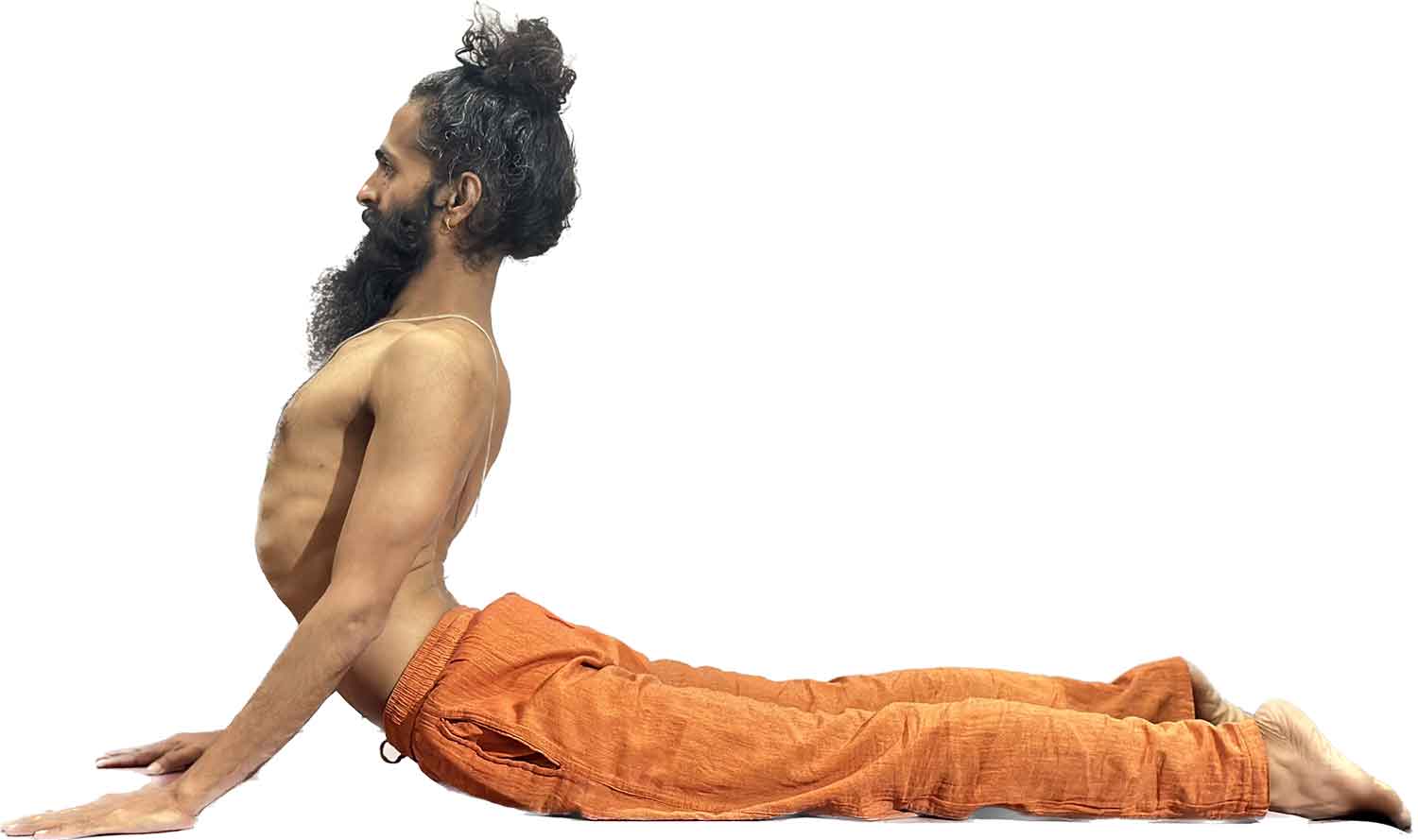
Process for Bhujngasana (Cobra Pose)
- Lie on your stomach- start by lying face down toward the mat with extended legs and toes. Keep your hand comfortable just under the shoulder with your elbow close to your sides.
- Engage the core and legs-press the upper point of your toe and engage with thigh muscles. Which constantly helps to protect and make balance of your back.
- Lift the chest a little up take or breathe in and slowly lift your chest over the mat. Rather using your hand use back muscles to make better balance. Keep your elbows slightly bent.
- Open chest wide- Make your shoulder blades back and down, while expanding your chest forward.
- Hold the pose- Take a deep and slow breath for a second and try to keep the neck long and gazing slightly upward.
- Release- slowly release your breath, sit back on the mat, and sit comfortably.
Benefits of Cobra Pose
- Strengthens the spine and back muscles.
- Stretch, shoulders, chest, and abdomen.
- Reduce the stress level, and fatigue by gentle opening of the heart center.
2. Dhanurasana (Bow Pose)
This pose focuses on the deep backbend in yoga that resembles the shape of an anchor bow. This yoga pose helps to strengthen the back muscles open the heart centers and help to stretch of whole front body structure. This is taken as one of the best ways to enhance body flexibility.

Process of Dhanurasana (Bow Pose)
- Lie on your stomach- lie down over the mat with your legs extended and arms by side.
- Bend your knee properly- bring your heels close to your glutes take back your hands and grab your ankles in a bow pose.
- Lift your chest and thighs- First, take a deep breath in and exhale it slowly. Press your feet into your hands to lift the chest and thigh.
- Open the chest part- draw your shoulders back away from the ear and gaze slightly upwards.
- Hold the pose- take a deep breath and hold it for a second, stretch your body slightly.
- Release- exhale the breath and gently back to normal position by lying down your chest and thighs on a mat. Release your ankle.
Benefit of Dhanurasana (Bow Pose)
- Strengthens the back muscle which is beneficial for good posture.
- Stretch, shoulders, chest, and abdomen to enhance flexibility.
- Stimulates the digestive organs that help to improve the digestive and relieving constipation.
- Help to boost the energy level that makes you stress-free, fatigue and
3. Ardha Matsyendrasana (Half fish Pose)
It is the yoga posture that helps to stretch your spine and shoulders, while its focus on increasing the flexibility of the chest.

Process of Ardha Matsyendrasana (Half fish Pose)
- Start with seating position- seat on the mat and extend your leg in front. Bend your knees and place your feet on the floor.
- Make your lag position: seat with your left leg under your right leg, and bring your left heel near your right hip. Touch your left knee with your right leg on the floor next to your left knee.
- Twist your leg: take a slow deep breath, lengthen your spine, and place your hand beyond you. Then exhale the breath twist yourself to the right, bring your arm across the body, and press your elbow against the outside of your right knee for a deep twist.
- Open the chest: Keep your spine tall and open your chest as you twist, and turn to the right arm slowly.
- Release: take a deep breath and exhale it, slowly return to the beginning position, then constantly repeat to another side.
4. Paschimottasana (Seated Forward Bend)
Paschimottanasana or Seated Forward Bend is a typical yoga posture that stretches the entire back of the body, from the spine to the pelvis and calves. This poses support for calming the mind, as well as relaxing and stimulating the digestive system.

Process of Paschimottasana (Seated forward bend)
- Start with a sitting position: Sit on the floor extended leg straight in front of you and your spine up.
- Exhale and lengthen: Take a slow deep breath and reach your arms up as you stretch through your spine.
- Inhale and move forward: As you inhale, bend your hips and start rolling forward, moving your hands to your feet. As you go deeper into the pose, stretch your spine.
- Hold the pose: Hold your feet, ankles, or heels if you can. The leg bandage can also be used if needed. Focus on stretching your spine and relaxing your head and neck.
- Take a deep breath: Hold the pose for several breaths, allowing your body to expand and deepen with each inhalation.
- Release: Exhale as you gently lift your torso back into position.
Benefits of Paschimottanasana
- Stretches the spine and pelvis
- Relaxes the mind
- Stimulates the digestive system
- Improves yoga pose
- Relieves menstrual discomfort
5. Setu Bandasana (Bridge Pose)
Setu Mudra is an open chest yoga that strengthens the spine, opens the chest, and provides flexibility in the neck and back.
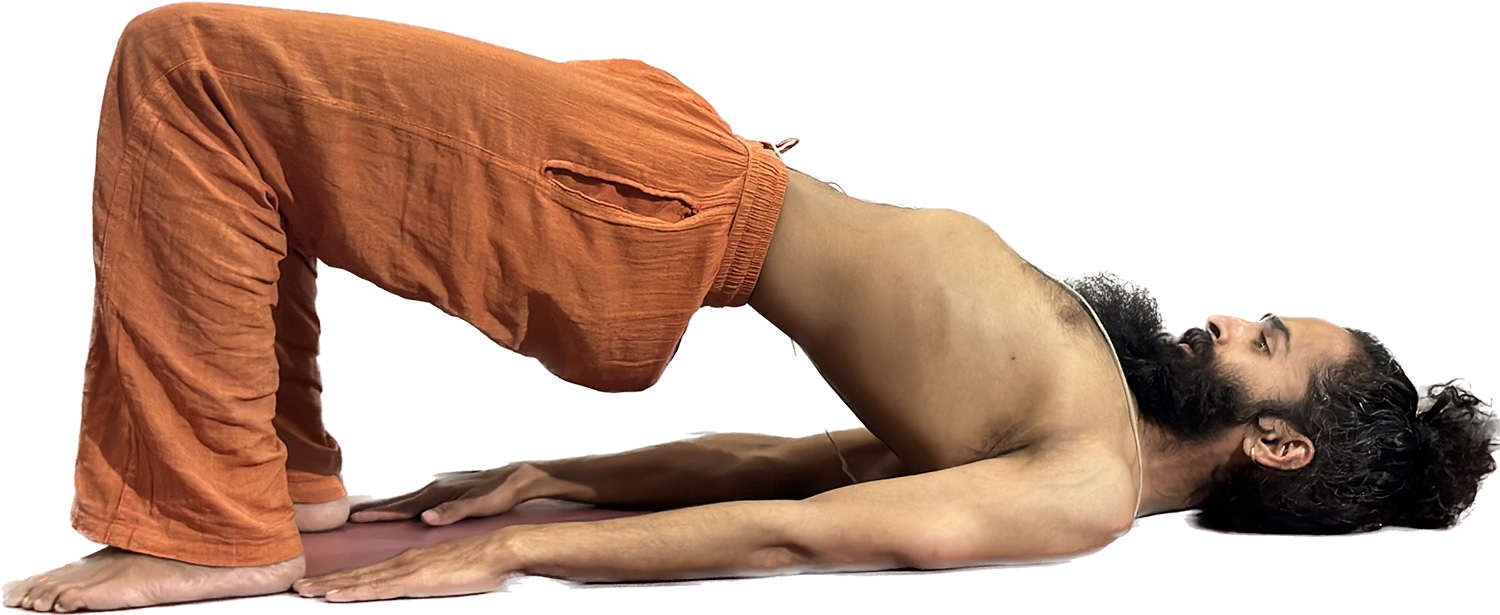
Process to do Setu Bandhasana (Setu Mudra)
- Start with a sitting position and lie on your back gently: Start by lying on your back with your arms at your sides facing the floor. Bend your knees and place your feet in a hip area near your waist.
- Make a position of feet and legs: Your feet must be flat on the floor and your knees should be parallel directly over your toes.
- Exhale and lift your hips: As you inhale, press your legs and arms onto the mat, lifting your hips toward the ceiling. Keep your hips level and engage your core to support your lower back.
- Hold the pose: Keep your nose in slightly to protect your neck, and breathe deeply, holding the pose for 5–10 breaths or as long as is convenient.
- Release: Exhale and slowly lower your spine back down, one spine at a time.
Benefits of Setu Bandhasana
- Strengthens the pelvis and pelvis
- Open chest and shoulders
- The front body is wider
- Relaxes muscles
Besides, the asana is effective for lung improvement and stability.
- Trikonasana (Triangle Pose)
- Ustrasana (Camel pose)
- Nadi sodhana pranayama ( Alternate Nostril breath)
- Kapalbhati pranayama ( Breath of fire)
- Matsyasana (fish Pose)
Conclusion: A Way for the Better Lungs through the Practice of Yoga
Practicing yoga in your daily life is the only way to increase physical, and mental stability. It helps to improve your well-being. Besides, it focuses on enhancing your life as well. So, make you’re your daily passion to live happily. Further, if you need any guidelines about yoga and any other like retreat courses in Nepal, Singing bowl training, and Yoga teacher training. We, Himalayan Yoga Academy were always available.
